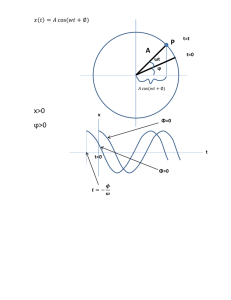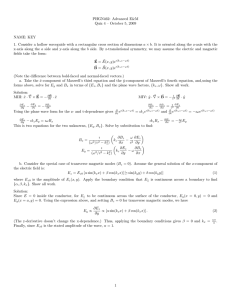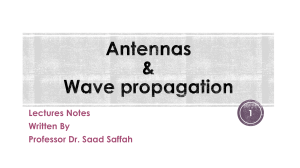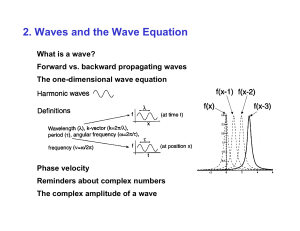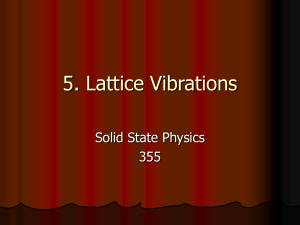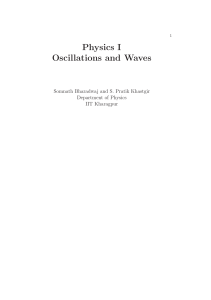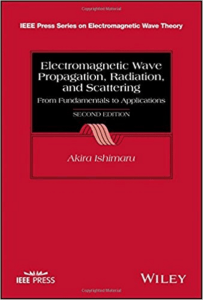PROBLEM SET 3 Problem 3.1 Verify that q(x, t) = Acos( 2π λ x) cos
advertisement
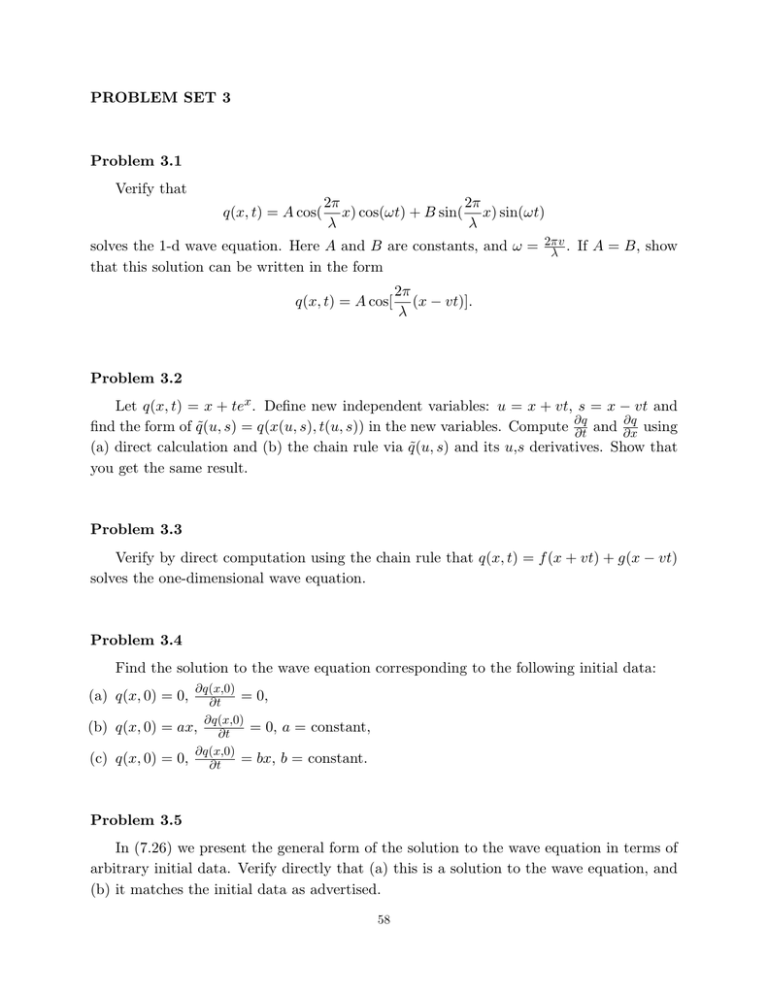
PROBLEM SET 3 Problem 3.1 Verify that q(x, t) = A cos( 2⇡ x) cos(!t) + B sin( 2⇡ x) sin(!t) solves the 1-d wave equation. Here A and B are constants, and ! = 2⇡v . If A = B, show that this solution can be written in the form q(x, t) = A cos[ 2⇡ (x vt)]. Problem 3.2 Let q(x, t) = x + tex . Define new independent variables: u = x + vt, s = x vt and @q find the form of q̃(u, s) = q(x(u, s), t(u, s)) in the new variables. Compute @q @t and @x using (a) direct calculation and (b) the chain rule via q̃(u, s) and its u,s derivatives. Show that you get the same result. Problem 3.3 Verify by direct computation using the chain rule that q(x, t) = f (x + vt) + g(x solves the one-dimensional wave equation. vt) Problem 3.4 Find the solution to the wave equation corresponding to the following initial data: @q(x,0) = 0, @t @q(x,0) ax, @t = 0, a = constant, @q(x,0) 0, @t = bx, b = constant. (a) q(x, 0) = 0, (b) q(x, 0) = (c) q(x, 0) = Problem 3.5 In (7.26) we present the general form of the solution to the wave equation in terms of arbitrary initial data. Verify directly that (a) this is a solution to the wave equation, and (b) it matches the initial data as advertised. 58 Problem 3.6 Determine the functions f and g in (7.13) associated with the standing wave solution q(x, t) = A sin kx cos kvt. Determine all values of A and k such that this solution satisfies (i) the boundary conditions (7.17), and (ii) the boundary conditions (7.19). Problem 3.7 Suppose h(z) is a given smooth function such that h(z) = 0 z 0, or z 1. You can think of h(z) as defining a “pulse” of finite length. Build a solution to the wave equation which corresponds to two such pulses, one of them inverted, which start out moving toward each other, which then collide and cancel each other out, and then propagate o↵ to arbitrarily large values of |x|. (See the following figure.) 59 h z q(x,t1) x q(x,t2) x q(x,t3) x 60
